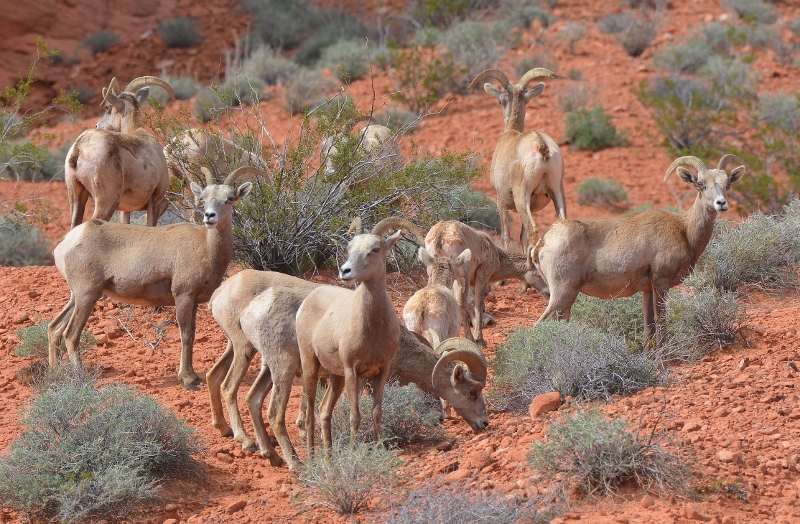
Just Add Water


What a thrill to encounter bighorn sheep during our visit to Valley of Fire State Park. Photo by author.
When people describe the desert, words like hot, dry, desolate, bleak, bare, brown, inhospitable, and intimidating are often mentioned. Those descriptions change dramatically when water is added to the mix!
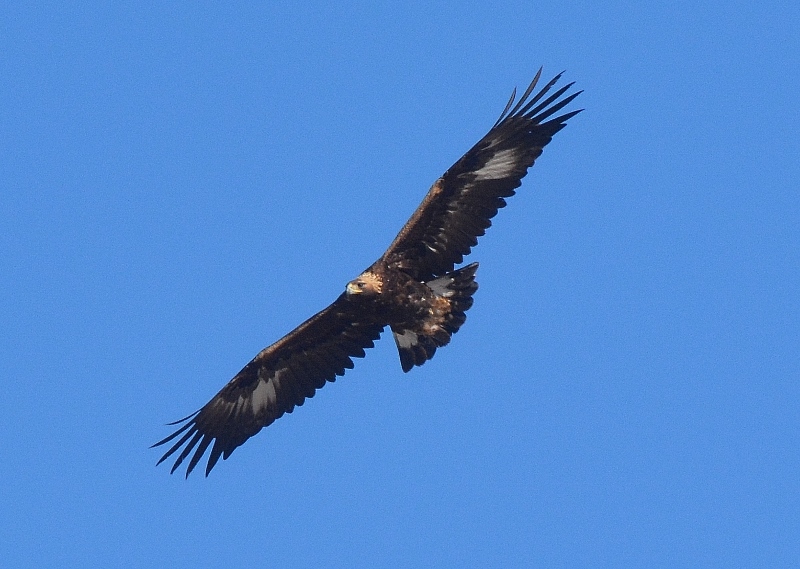

We counted sixteen raptors, including four golden eagles, during our drive through Nevada’s wide-open spaces. Photo by author.
Every ten years or so, Mother Nature sprinkles the desert with extra rain—enough rain to turn a hot, suffocating wind into a cool breeze; enough rain to turn a brown, dry landscape into fields and hillsides of lush, green grass adorned with wildflowers of every size and color; enough rain to turn a seemingly inhospitable land into a paradise where plants and wildlife flourish and people come from miles around to experience the splendor.
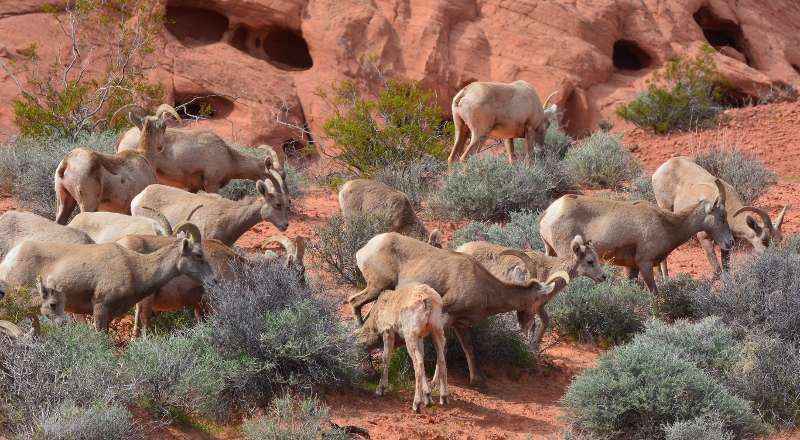

I snapped pictures of the herd as they foraged their way through the creosote and burrobushes. Photo by author.
This is one of those unforgettable years. Late in March, Kathy and I set out on a nine-day adventure through America’s Southwestern deserts to experience the splendor for ourselves.
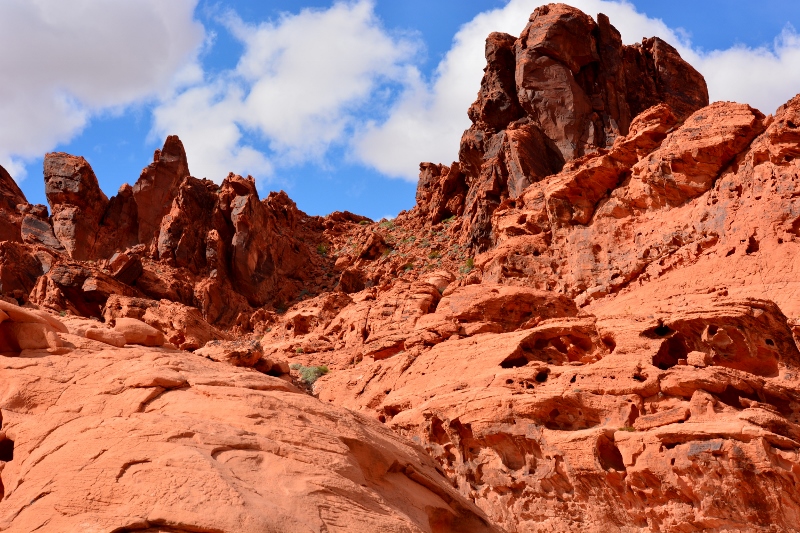

Valley of Fire State Park’s sandstone rock formations reminded me of massive cathedrals. Photo by author.
We began by traveling through Nevada’s Great Basin Desert, discovering mile after mile of wide–open spaces and marveling at the surprising abundance of raptors—golden eagles, prairie falcons, kestrels, red-tailed hawks, and ferruginous hawks—taking advantage of improved habitat brought on by the recent rains and the plethora of rabbits, rodents, and small birds to prey on.
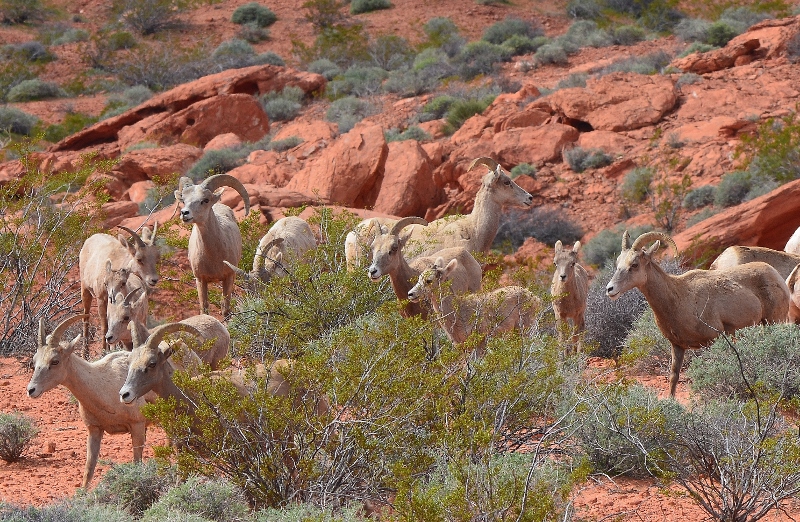

I counted about forty in the herd, mostly ewes. Can you spot the ram and the three lambs? Photo by author.
Before leaving Nevada, we entered the Mojave Desert near Lake Mead and visited Valley of Fire State Park. The road into the park was bordered on both sides by bright yellow brittlebush flowers and orange desert mallow.
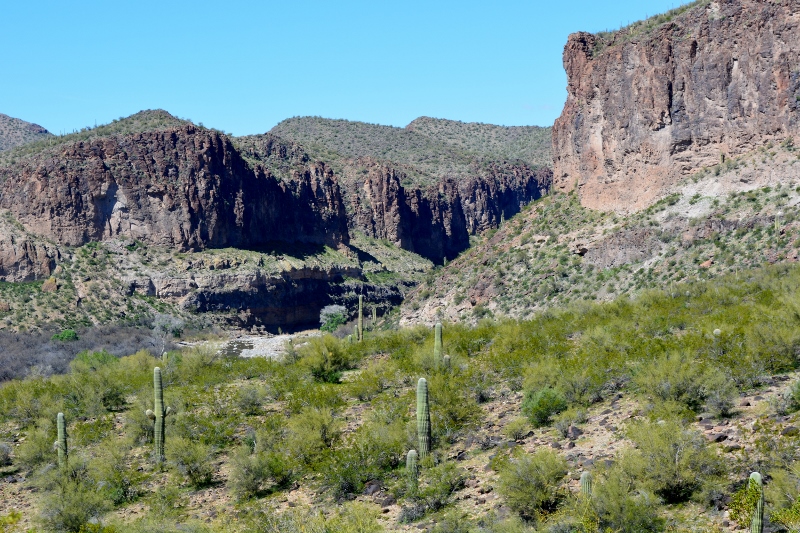

The idea of exploring this canyon at Burro Creek Recreation Site intrigued Kathy and me. Maybe next time. Photo by author.
A perfect sixty-five degrees greeted us as we stepped from the car into a glorious land where billowy white thunderheads loomed over legions of towering red sandstone rock formations.
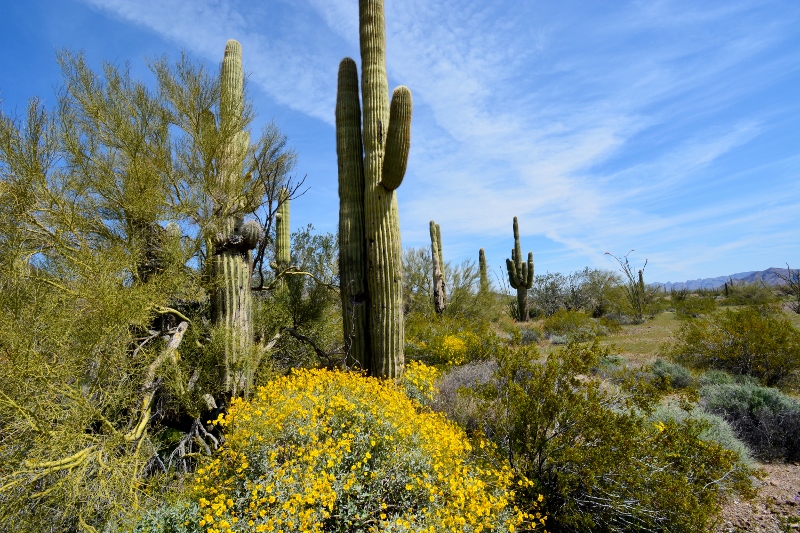

The Kofa National Wildlife Refuge was decked out in brilliant colors on the day we visited, due to this year’s rains. Photo by author.
I had just finished photographing one of the magnificent sandstone cathedrals when Kathy noticed movement amongst the creosotes and burrobushes, sixty yards away. “Are those bighorn sheep?” she said.
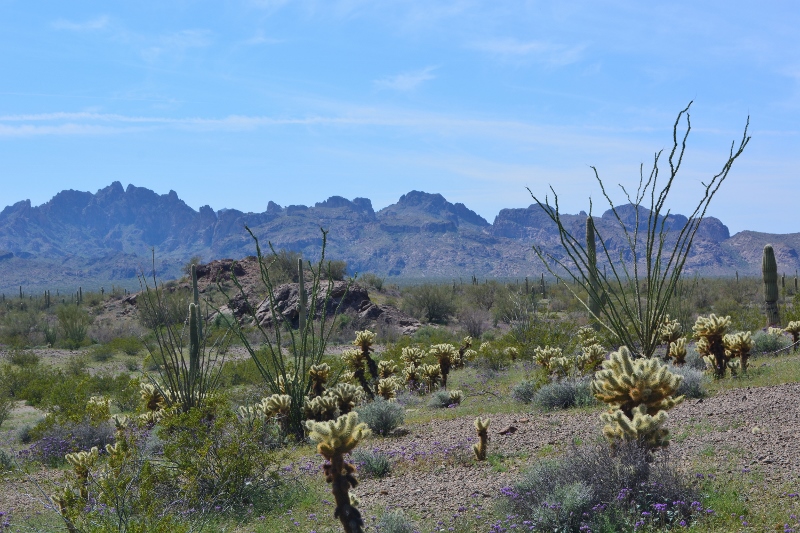

The Kofa National Wildlife Refuge was created in 1939 to protect as many as 800 desert bighorn sheep. Photo by author.
“They sure are!” I replied. “And they’re headed this way.” Kathy kept her eye on the sheep while I set up my tripod and began snapping pictures of the herd as they foraged through the vegetation in our direction.
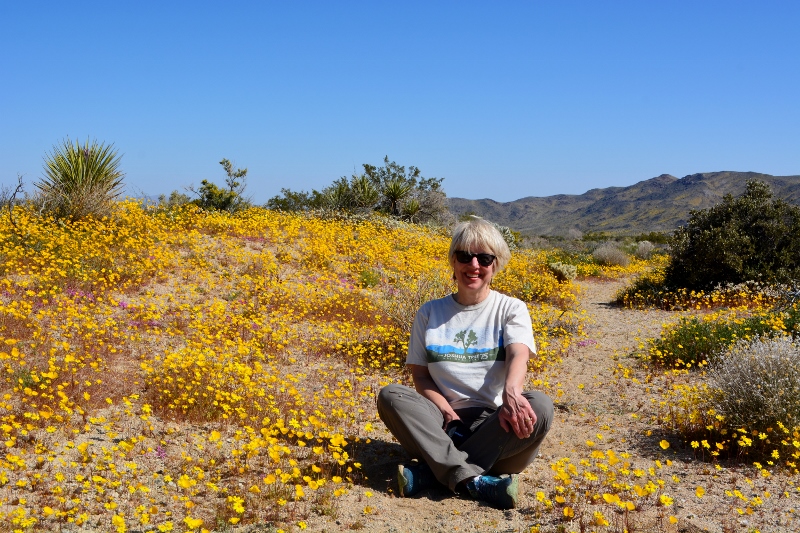

Eye-popping yellow flowers blanketed Joshua Tree National Park. Photo by author.
My rough count totaled forty animals, all adult ewes, with the exception of three lambs and one ram. Most rams remain isolated in small bands this time of year; this young adult appeared quite content to hang out with the ladies.
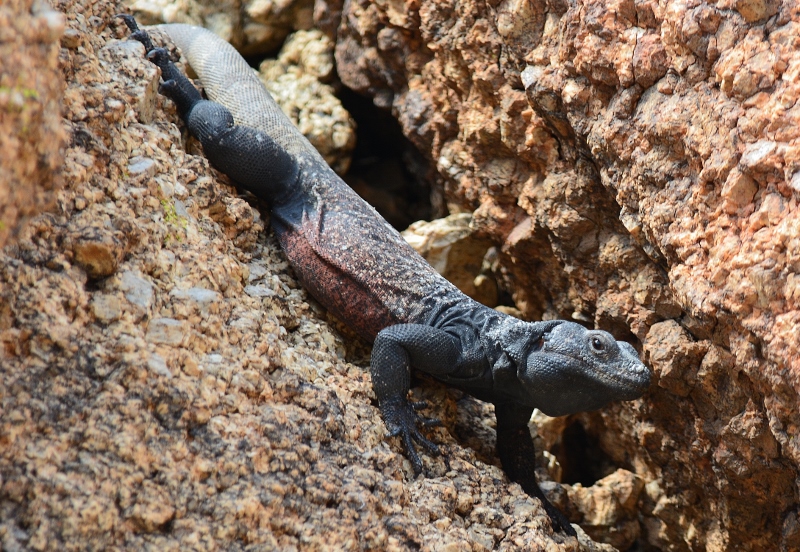

Joshua Tree National Park is one of the few places left where visitors can count on seeing iconic desert reptile species like this chuckwalla. Photo by author.
Heading south, into Arizona and the Sonoran Desert, Kathy and I took a side trip off Highway 93, into a scenic recreation site called Burro Creek.
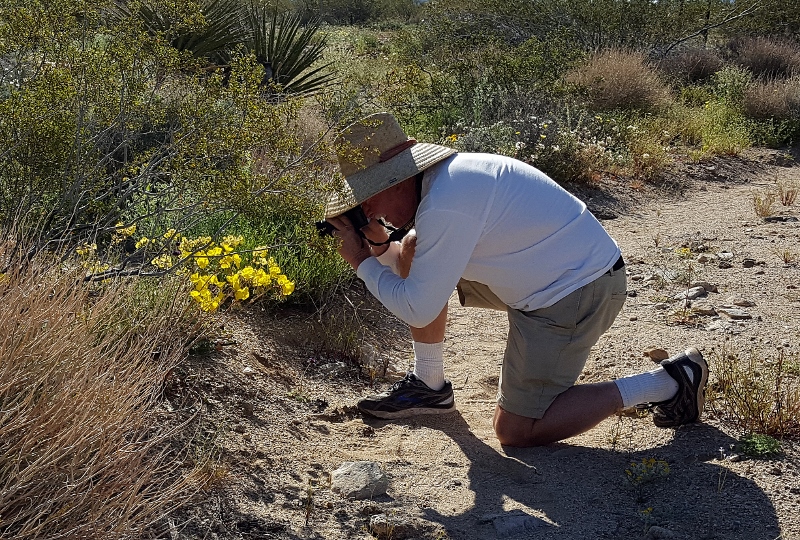

I was like a kid in a candy shop photographing all the desert wildflowers. Photo by Kathy Callan.
Mesmerized by the enormity of the sheer rock cliffs, we watched Burro Creek meander through a forest of creosote and saguaros, into a cavernous abyss that begged to be explored the next time we pass this way.
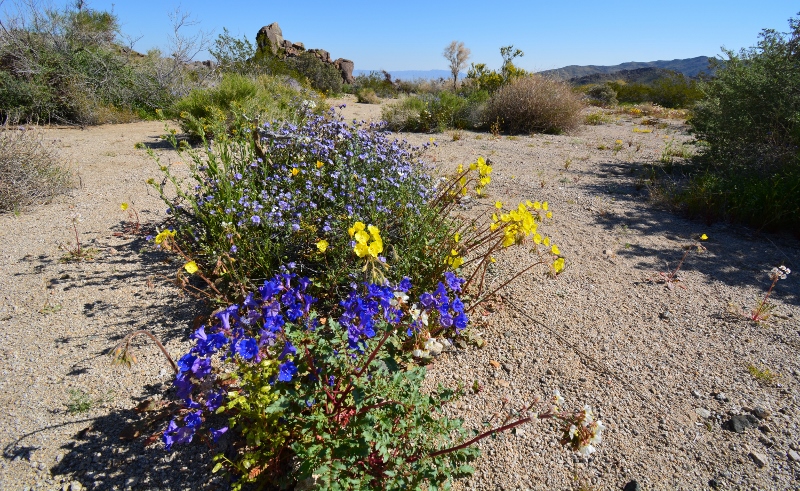

Bluebells and lavender Phacelia complemented the ocean of yellow flowers at Joshua Tree National Park. Photo by author.
One of the highlights of our trip was visiting the Sonoran Desert’s Kofa National Wildlife Refuge, southeast of Quartzsite, Arizona. The refuge contains two mountain ranges, the Kofa Mountains and the Castle Dome Mountains.
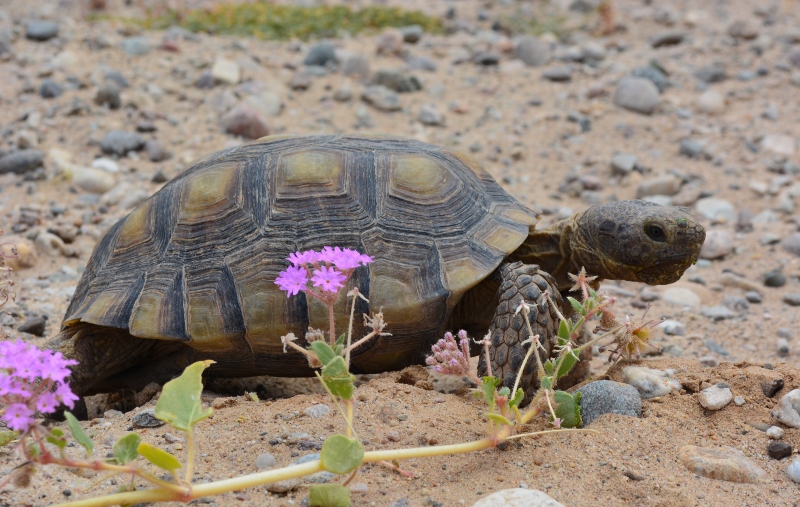

Desert tortoises feed on wildflowers, cacti, and grasses. I watched this one take a bite of this desert sand verbena. Photo by author.
These rugged mountains provide water and critical habitat for as many as 800 desert bighorn sheep. The refuge was established in 1939 to protect these icons of the desert and maintain this priceless natural resource for future generations to enjoy.
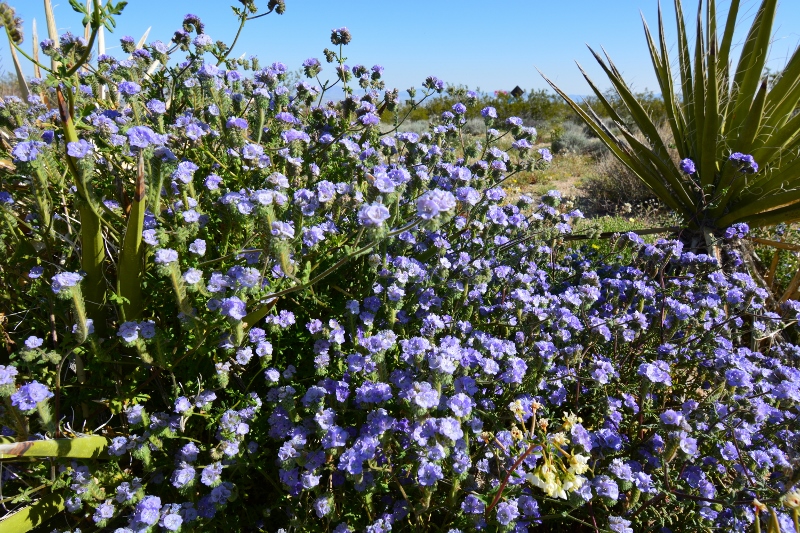

Many of the wildflower species found at Joshua Tree National Park are in the genus Phacelia. Photo by author.
Kathy and I climbed out of bed at 3:30 a.m. on the second-to-last day of our trip so we could drive from Parker, Arizona, and arrive at California’s Joshua Tree National Park in time to take advantage of the early morning light.
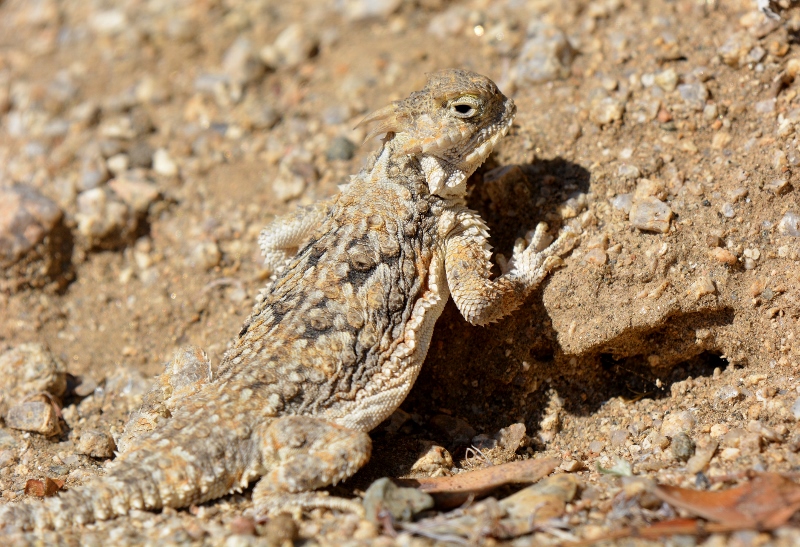

This desert horned lizard scampered across our path as we hiked Joshua Tree National Park. Photo by author.
Joshua Tree, in the Mojave and Colorado deserts, has always been one of our favorite national parks. In addition to its Joshua trees, time-honored rock formations, and dazzling wildflower displays, this national treasure is one of the few remaining places where desert wildlife enthusiasts have a realistic chance of encountering chuckwallas, horned lizards, collared lizards, or even a desert tortoise.
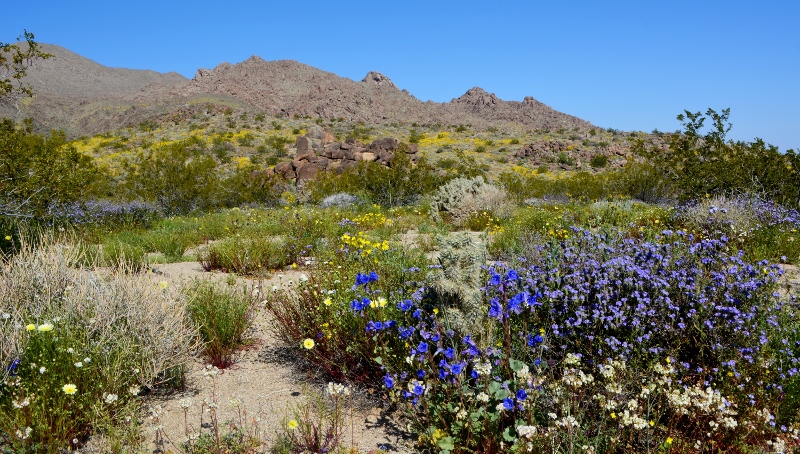

Scenes like this dominated the landscape at Joshua Tree National Park, and the cactus bloom was yet to come. Photo by author.
March was too early in the year to experience Joshua Tree’s famous cactus bloom, but this year’s wildflower display turned out to be even more impressive than advertised.
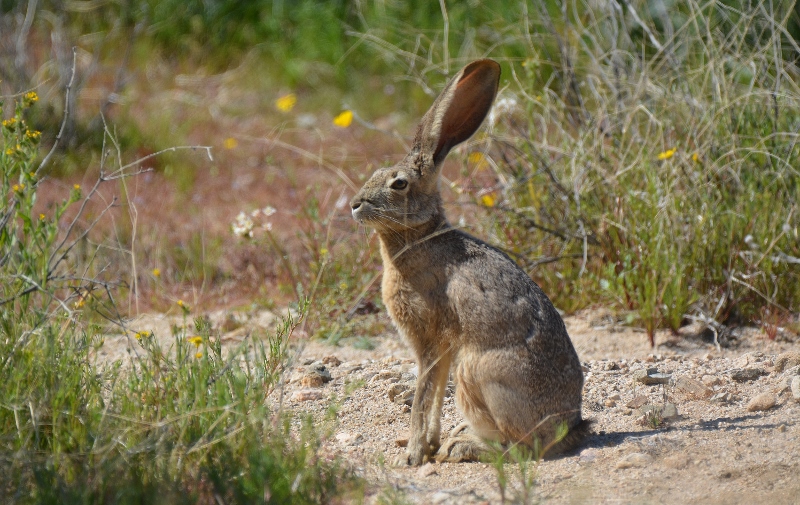

Every now and then, a jackrabbit would dash out of the bushes and surprise us as we hiked the desert washes of Joshua Tree National Park. Photo by author.
We hiked for miles through fields of yellow—eye-popping desert poppies, Bigelow’s coreopsis, and golden suncups—complemented by desert bluebells, lavender Phacelia, and pink sand verbena. Every now and then, a jackrabbit would interrupt the serenity of the moment or a horned lizard would scamper across our path.
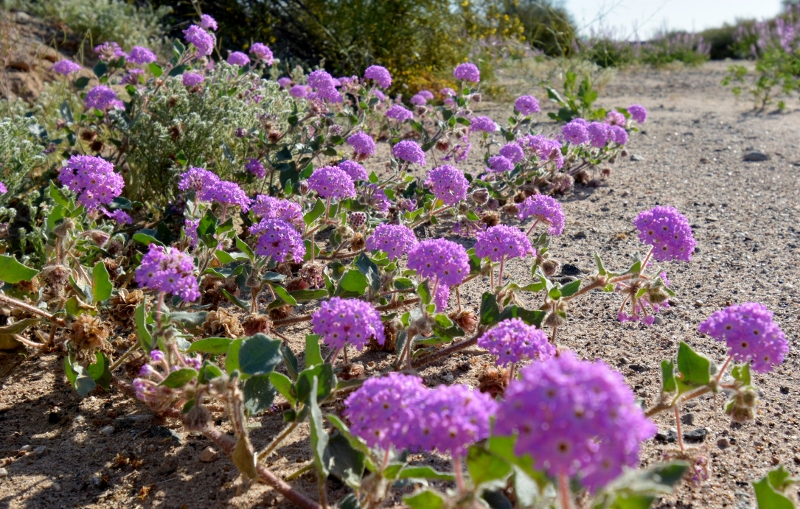

I see why they named this gorgeous pink flower desert sand verbena; we found it in the sandy washes. Photo by author.
Kathy and I thought we’d seen all America’s Southwestern deserts had to offer when we headed north out of Southern California on the last day of our journey. We decided to avoid the LA traffic by taking the desert route through Palmdale and Lancaster, connecting with Interstate 5 at Gorman.
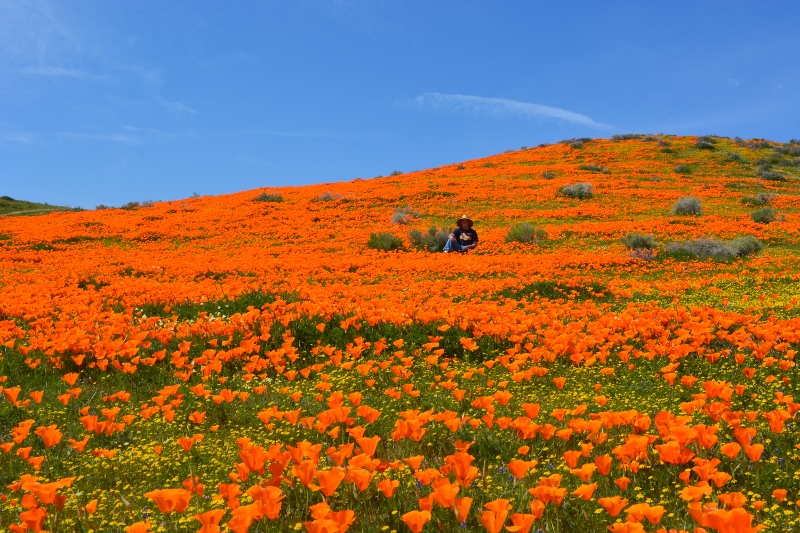

Kathy and I reveled in the joy of the moment. Photo by Kathy Callan.
We were halfway between Highway 14 and Quail Lake, on Highway 138, when the desert landscape turned from shades of green to a brilliant orange.
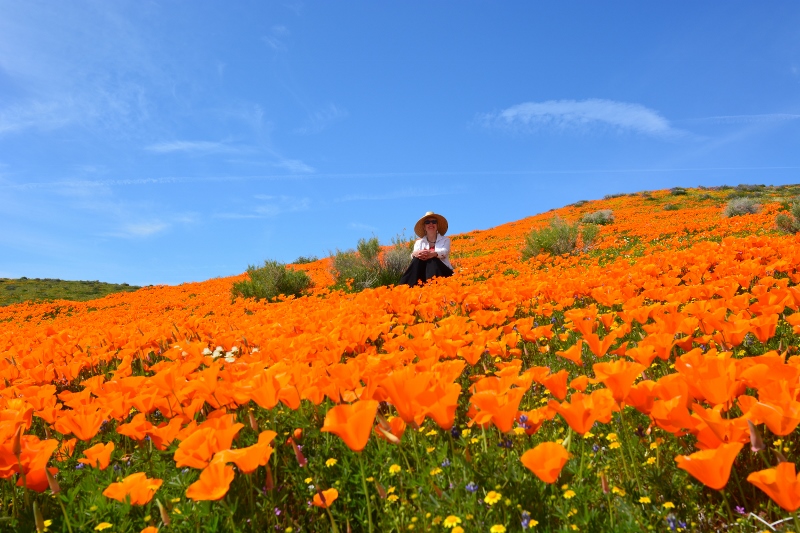

Kathy is surrounded by an ocean of poppies. Photo by author.
California poppies dominated the countryside as far as the eye could see. The rolling hillsides to the south were alive with color, so we ventured up a nearby dirt road for a closer look. Engulfed in a sea of wildflowers, Kathy and I spent the next two hours enjoying the cool spring breeze and reveling in the moment.
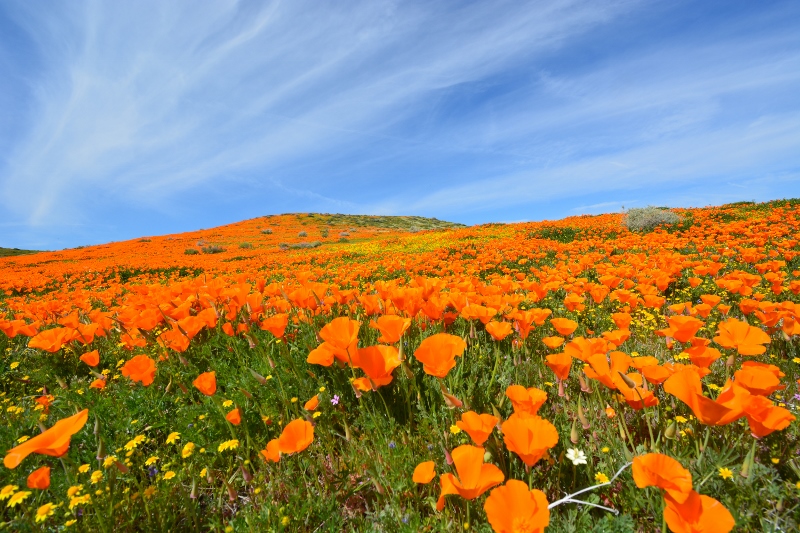

Brilliant orange poppies dominated the desert landscape, while dozens of other wildflower species competed for our attention in the Antelope Valley. Photo by author.
A picture may be worth a thousand words, but nothing can take the place of visiting our Southwestern deserts and experiencing this spring’s miracle for yourselves—a miracle that happens when Mother Nature sprinkles the desert with an extra helping of precious water.
As of this writing, Joshua Tree National Park reports that the wildflower bloom is at its peak in the northern section of the park. The Antelope Valley California Poppy Reserve, northwest of Lancaster, expects the poppy bloom to last through April and will post weekly updates on its website through Mother’s Day.
This piece also appeared in my April 23, 2019, “On Patrol” column in My Outdoor Buddy.

